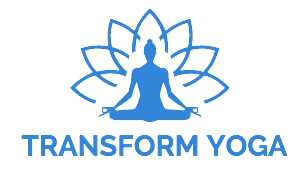
Breathe Beyond the Front Ribs: Unlocking Your Full Breathing Potential
Most of us think we know how to breathe. After all, it’s something we’ve been doing since the day we were born. But in yoga practice — and in everyday life — many people only use the front of their ribcage when they breathe. The chest rises and falls, but the ribs at the sides and back stay almost still.
When that happens, the muscles between the ribs (the intercostals) at the sides and back become tight, almost “forgotten.” Over time, this constricts breathing capacity, limits oxygen intake, and has a big impact on the nervous system.
Why Full Ribcage Breathing Matters
Your ribcage is designed to move like an expanding barrel in all directions — front, sides, and back. When we use the whole ribcage, we not only increase lung capacity but also stimulate the diaphragm fully. This is the key to activating the parasympathetic nervous system (your body’s calming, regulating response).
When you breathe only into the front ribs:
-
The breath becomes shallow.
-
The body stays in a more energised, alert state (sympathetic nervous system).
-
Over time, this can contribute to stress, anxiety, and fatigue.
When you breathe into all three areas — front, side, and back — you balance the system. You can energise when you need it, ground when you need it, and stay steady in between.
The Three Directions of Breath
-
Front ribs (energising): Breathing into the front body lifts energy, sharpens focus, and prepares you for activity.
-
Side ribs (balancing): Expanding into the sides creates space and stability, helping the nervous system find equilibrium.
-
Back ribs (grounding): Breathing into the back body is deeply calming and settling. It’s especially powerful in forward folds, when the front ribs are compressed.
Breath & Asana: Why It Matters in Practice
Yoga postures naturally change how we can breathe. The shape of the body either creates space or compression in certain areas of the ribcage. By paying attention to this, we can learn where to direct the breath in each pose — and in doing so, maximise the effect on the nervous system.
-
Forward folds: The front of the body compresses, which makes it harder to breathe into the front ribs. This is why forward folds are calming — they naturally encourage us to access the back ribs. By consciously directing breath into the back body here, we deepen the grounding and soothing effect on the nervous system.
-
Backbends: The back body is compressed, which restricts back-rib breathing. This is one reason backbends are so energising for the body and mind — they naturally draw the breath forward into the chest and front ribs. If we also expand into the sides, we can create balance and prevent over-stimulation.
-
Twists: One side of the ribcage will feel more open, while the other feels tight. Breathing into the open side helps expand space and bring balance to the pose. Over time, we can also invite breath into the more restricted side, gently teaching the ribs and intercostal muscles to release.
If we don’t adapt our breathing to the shape we’re in, the nervous system can become overstimulated or unbalanced. For example, if you fold forward but keep trying to push the breath into the front ribs, you might end up feeling restless instead of calm.
An Invitation to Explore
In my classes, I often cue the breath specifically: “Breathe into your back body. Expand into your left ribs. Feel your chest rise.” These prompts guide you to connect breath and body in a way that supports both the posture and the nervous system.
But if you’re practicing on your own, you can play with this exploration:
-
Ask yourself: Which part of my ribs feels most open right now? Where feels compressed?
-
Experiment: Direct your inhale into the space that’s available. Can you expand into the closed-off areas too, even just a little?
-
Notice: How does it change your experience of the pose? Does it energise, calm, or balance you?
Breath becomes a compass in asana — pointing us toward where the body needs attention and showing us how to shift our state of mind.
Try This: Explore Your Ribcage Breath
Find a comfortable seat or lie down. Place your hands on each area in turn, and take 5–10 breaths:
-
Front ribs: Hands on sternum and upper ribs. Feel the chest gently rise and fall.
-
Side ribs: Hands on the sides of your ribcage. Imagine widening outward into your palms.
-
Back ribs: Hands behind you (or wrap arms around ribcage). Visualise inflating the back ribs into the floor or chair.
✨ Tip: If your side and back ribs haven’t moved much in years, it may take time. Be patient, gentle, and consistent. Over time, these muscles will remember how to expand again.
Nervous System Effects
When we access all directions of breathing:
-
Stress levels drop.
-
The mind steadies.
-
Energy is more adaptable — you can “switch on” or “switch off” when you need.
When we don’t, and stick only to the front ribs:
-
The breath remains shallow and short.
-
The nervous system leans towards fight-or-flight.
-
The body may feel jittery, restless, or fatigued instead of balanced.
In Closing
Breathing isn’t just about getting air in and out — it’s a powerful tool for regulating how we feel, move, and live. By reclaiming the full mobility of the ribcage, we open the door to steadier energy, calmer minds, and a deeper connection to our yoga practice.
Next time you roll out your mat, notice: which part of your ribcage is doing most of the work? And can you invite breath into the spaces that have been waiting to expand?

